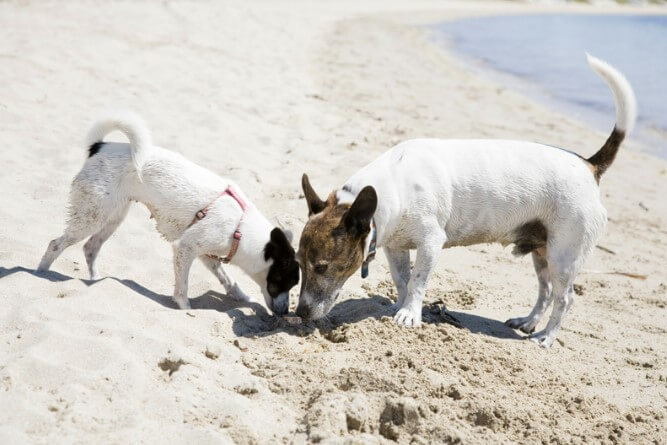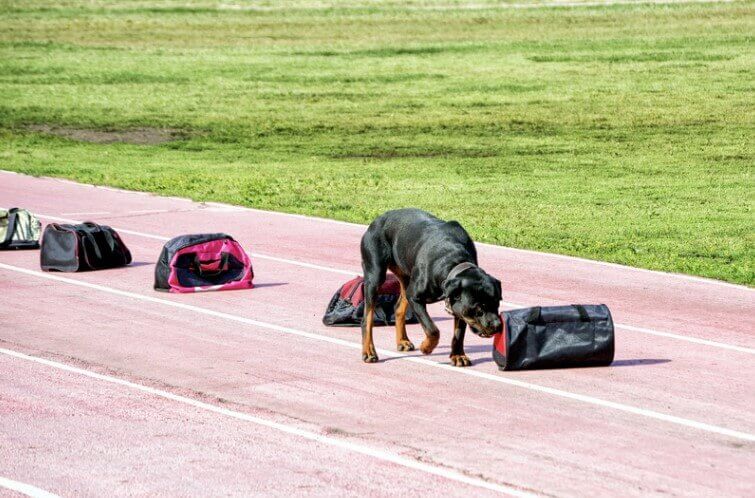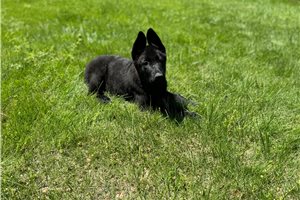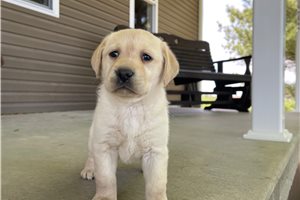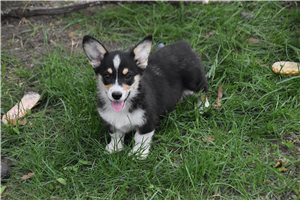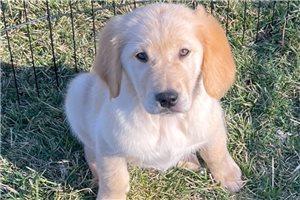Most of us are aware that a dog’s sense of smell is far stronger than a human's. Dogs' uncanny noses have allowed humans to find unique jobs for dogs such as bomb detectors, drug inspectors, and human rescuers in the aftermath of avalanches. Research indicates that a dog’s sense of smell is up to 10,000 times stronger with 300,000 olfactory receptors, paling in comparison to humans, so it’s no wonder that they are often used to help police and military squads as well as search and rescue teams.
The History of Using Scent in Medical Settings
Within the past decade or so, humans have begun using a dog’s sense of smell in the medical world. However, the fundamental idea of using scent to detect illnesses dates as far back as the Greek physician Hippocrates! He was known for smelling the breath of patients to deduce potential sickness or organ failure. Modern science has further discovered that dogs can smell slight changes in certain hormones and body odors indicating the presence of cancers, narcolepsy, and the onset of seizures. For example, a 2013 study by Ortega et al. provided exciting results of dogs being able to detect narcolepsy from the sweat samples of 11 out of 12 affected human patients.
Do You Smell That? Why Dogs Have a Better Sense of Smell Than Humans
The olfactory system refers to the connections between the brain and the parts of the body that control the sense of smell. There are evolutionary reasons why some animals have stronger olfactory systems than others. In the wild, dogs need to be aware of the presence of potential prey and dangers. “Under perfect conditions, [dogs] have been reported to smell objects or people as far as 20km (12 miles) away.” Have you ever seen your dog barking out the window and there is nobody there? Chances are they can hear or smell something that we can’t. Their range of smell allows them to be aware of their environment in a fashion that is unbeknownst to humans.
Schematic structure of the olfactory system in dogs and humans, Jendrny et. al.
What Parts of a Dog's Brain Control Scent?
A main contributor to this extraordinary sense of smell is the vomeronasal organ, also know as the Jacobson's organ (see photo above). Even though some humans have this body part, it remains non-functional. Having a secondary level of smell is useful for animals like dogs and snakes, as it creates more surface area for molecule receptors and higher specialization of these receptors. This means that the Jacobson's organ is advantageous for animals, particularly those in the wild, when it comes to finding food and mating partners.
So what are dogs actually smelling? Like any animal, they are able to smell the chemical molecules like pheromones and odors. These molecules reach receptors in the nose which trigger electrical messages from neurons to the brain for processing. Sometimes we process good smells and other times bad smells. In fact, there are certain scents and chemicals that can be dangerous to dogs. So, if you like to use candles and air fresheners in your home, make sure you are aware that scents like peppermint, cinnamon, and most citrus essential oils are harmful to dogs. Snub-nosed breeds like Pugs and Shih-Tzus are most vulnerable because their nasal tract is narrower. As a result, they can suffer breathing problems quicker and easier than other breeds with traditional longer snouts, like Poodles and Retrievers. Consult with your veterinarian right away if you see any problems with your dog's breathing.
Dogs and Their Incredible Gift of Smelling Cancer
According to Cancer.org, dogs are able to smell the presence of cancerous tumors. These tumors produce odors in our breath, blood, and urine that can be picked up by dogs with the proper training. While this field of research is still up-and-coming, specific cancers that are being investigated are bladder cancer, urine cancer, and skin cancer (melanoma). The first notable hypothesis of a dog's ability to detect malignant melanoma by smell arose in 1989 by two researchers, Hywel Williams and Andres Pembroke – like the Corgi! Their work, featured in The Lancet, identified an occurrence where a dog continued to sniff the lesion on its owner's thigh; this lesion ended up being cancerous. From there, more studies have taken place to investigate the truth. It seems like they were on to something!
A UK-based organization called Medical Detection Dogs has been a world leader in advancing these studies during the 21st century. They have an amazing team of highly-trained dogs that have helped patients suffering from Diabetes, PoTS Syndrome, and various forms of cancer. A skeptic may ask how accurately a dog can sniff out these conditions. You might be surprised (or maybe not) to know that one of the Medical Detection Dogs has learned to identify cancer at an astounding 95% rate of accuracy!
More and more evidence supports the use of dogs in the medical field. The potential implications of using canines for early detection are vast, as it could lead to earlier diagnosis, better treatment options, and improved rates of survival. If harnessed correctly, future findings could be life-changing for many individuals and families affected by cancer.
Smelling Seizures in People with Epilepsy
In the case of cancer, dogs are typically smelling blood and urine samples. After the findings of a dog's ability to smell out cancer, researchers began to focus on other conditions. In recent years, the connection was made that maybe, just maybe, they could help to predict seizures. Epilepsy is a known condition that causes unannounced seizures, and people with epilepsy became a group of interest to look into. As opposed to blood and urine samples, seizure-alerting dogs are able to smell certain hormones traceable in the sweat of humans.
How does a medical service dog assist in an emergency?
During the phases of a seizure, there is an incredible increase in brain activity which results in an overwhelming response by the body. With so much going on at once, the body often breaks out in a sweat. In the best-case scenario, dogs are able to detect the very early onset of a seizure and are trained to alarm their owner so that they can prepare. This gives the person enough time to take their prescribed medicine, call a medical professional, or move to a place that is away from hard or sharp edges, giving them the best chance to stay safe and healthy before the seizure turns aggressive. In fact, dogs can detect seizures 45 minutes before they happen, with up to 100% accuracy! These amazing paws – pardon, feats – are wonders to the world that will continue to help people in the near and long term future.
What does a scent-detecting dog in action look like?
In this amazing 1-minute video from Tina & Max, an account highlighting what it's like living with epilepsy, you can see how this looks live-in-action! Some theories mention a dog's ability to hear higher frequencies than humans, such as an increased heart rate or anxiety-induced body language. All of these things most likely play a part! As seen in the video, the dog is a German Shepherd. Larger dog breeds are often used so they can be strong enough to support the weight of a person. Bigger dogs also have a physical presence to offer a better sense of security and alertness. The presence of a strong companion can offer assurance, comfort, and a sense of security that is invaluable to those living with epilepsy. Moments like these offer a tangible reality proving that dogs truly are man's (and woman's) best friend.
How Canines Detect COVID-19 and Other Respiratory Illnesses
With all of the COVID-19 concerns still lingering, it begs the question if dogs can also smell the presence of COVID-19, influenza, and cold symptoms. Since COVID-19 detection tests rely on bodily fluids, it seems as though they would be able to. Although the research is still quite recent, dogs can be trained to smell and identify the presence of COVID as well as a normal PCR test. This method has proven to be both as accurate and as reliable as traditional tests, adding another possible layer of help for public health professionals.
The science behind detecting COVID-19 by scent
These dogs have been trained to detect the presence of COVID-19 without actually coming into contact with infected individuals. The coronavirus presents a different set of challenges due to its rapid mutation rate, but dogs are able to pick up on even subtle changes in the scent of affected people, making them excellent trackers even when conventional tests fail or are too expensive or time-consuming. The science behind this process is based on our understanding that when a virus enters our bodies, it causes biochemical changes which manifest as unique odors. Dogs’ noses are extremely sensitive, so they can easily detect these subtle scents and alert their handlers when they catch a whiff. This method is especially useful for quickly screening large groups of people who may have come into contact with an infected individual, such as at airports or large events.
Overall, using dogs for COVID-19 detection is proving very successful thus far. They provide an efficient way to screen large groups quickly while reducing contact between potentially infected people – all thanks to their strong sniffer and dedicated handlers!
Smell and Tell: The Future of Harnessing Dogs' Sense of Smell to Detect Illnesses
Service dogs are diversifying as more and more ways are learned about how dogs can better our lives as people. Like anything, one thing leads to the next. Clear advantages to using dogs' sense of smell to screen for health problems are the non-invasive practices, speed of acquiring results, low costs, and safety for the person to be tested. Some limitations may be someone's fear of dogs, allergies to dogs, and of course, a lack of direct, verbal communication between a doctor and a dog.
Standard Poodles, Labrador Retrievers, and German Shepherds are popular breeds used for these services due to their intelligence, loyalty, and endurance. They have a knack for completing tasks and are also highly trainable breeds. When it comes to smelling and detecting sickness, larger dog breeds have an advantage thanks to their large noses that can take in more air with each breath. This extra capacity for sniffing out odors allows them to detect subtle changes in scents that may indicate a medical condition before it becomes outwardly apparent. This is especially true when trained properly by experienced professionals who understand how best to utilize these powerful noses. In addition, because these larger breeds tend to be sturdier than smaller ones, they also last longer on service jobs since they do not tire easily from physical labor or long hours of monitoring for signs of illness.
The training that a dog must undergo for smelling out sicknesses is fairly straightforward. Dogs are exposed to hundreds of different samples of breath, saliva, blood, and urine and are rewarded each time for getting the right answer! It is the same concept that follows teaching a dog commands like "Sit" and "Come." When all is said and done, our furry friends continue to amaze us in new ways.
Sniff Out Your New Best Friend at Pawrade
If you are looking for an emotional support dog or have other medical needs that you think a dog could help with, browse our puppies for sale! It is extremely important to start training a puppy for your specific needs at an early age. You will be able to build the trust and relationship that is necessary to have between an owner and their support pet.
